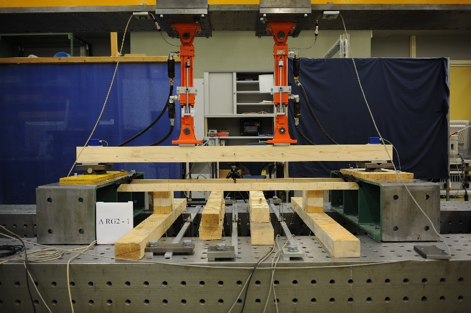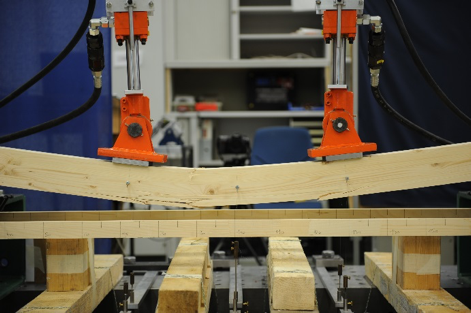Bending behavior of glued laminated timber with fiber inlays
Summary
Glued laminated timber (GLT) is one of the most important building materials in the field of timber engineering. Compared to solid wood, it is characterized by its high dimensional stability, homogeneity and strength and provides great freedom regarding element size and shape. However, the load bearing capacity still exhibit a large scatter of test results and a GLT beam fails generally in a brittle manner. Both aspects form a major disadvantage compared to competing building materials such as steel or reinforced concrete.
The aim of this research project is the improvement of the bending behavior via inlays of fiber materials (glass, carbon or basalt fibers) in the glueline of adjacent timber boards. On one side, this measure leads to a higher homogeneity of a GLT beam, since local weak wood sections with distorted structure and low stiffness exhibit a higher reinforcement ratio than clear wood sections. Moreover, the governing failure regime of a beam is shifted from the brittle tensile zone to the ductile compression zone if sufficiently reinforced. The resulting non-linear behavior opens up the possibility to redistribute moments in statically indeterminate beams.




